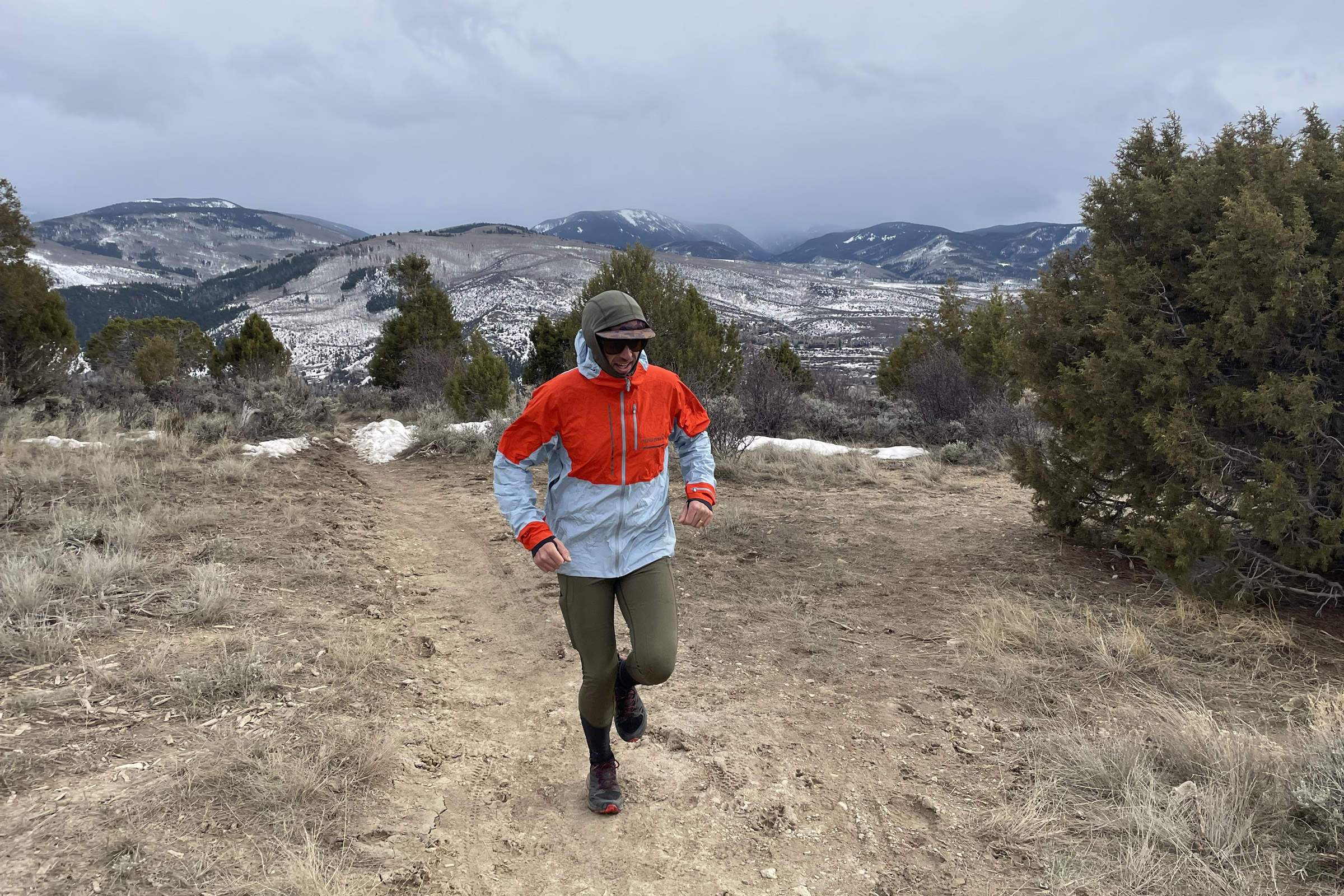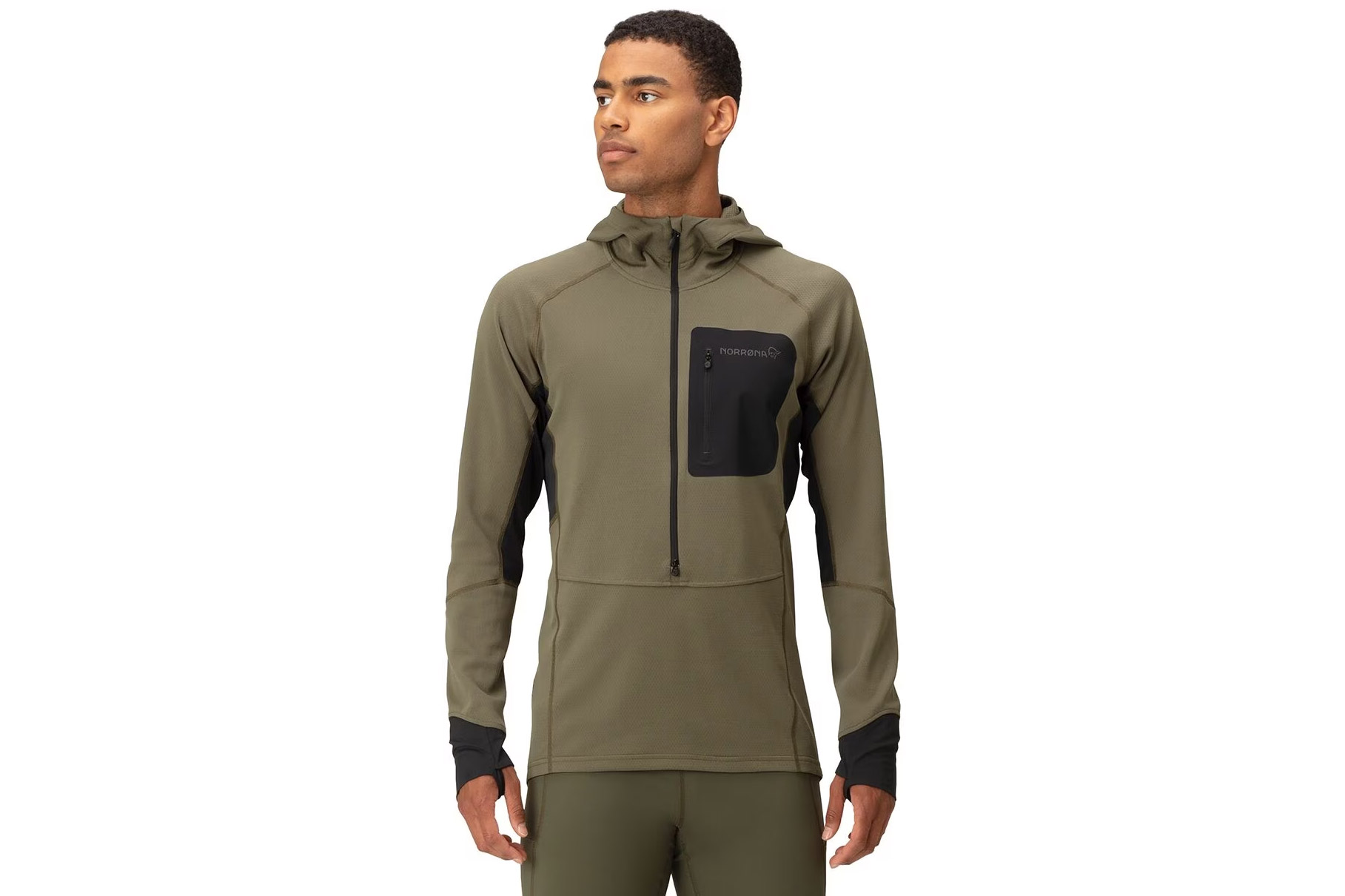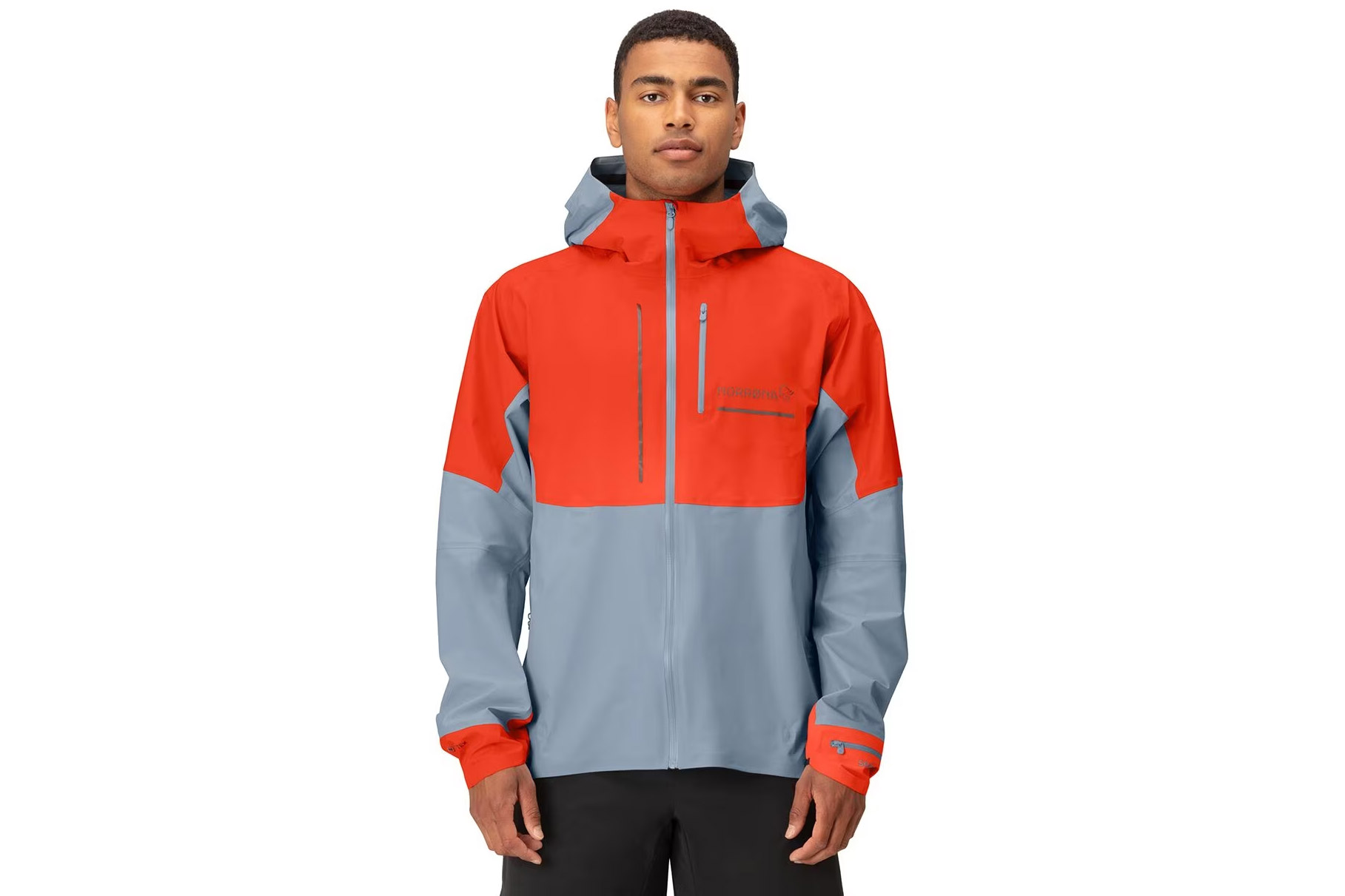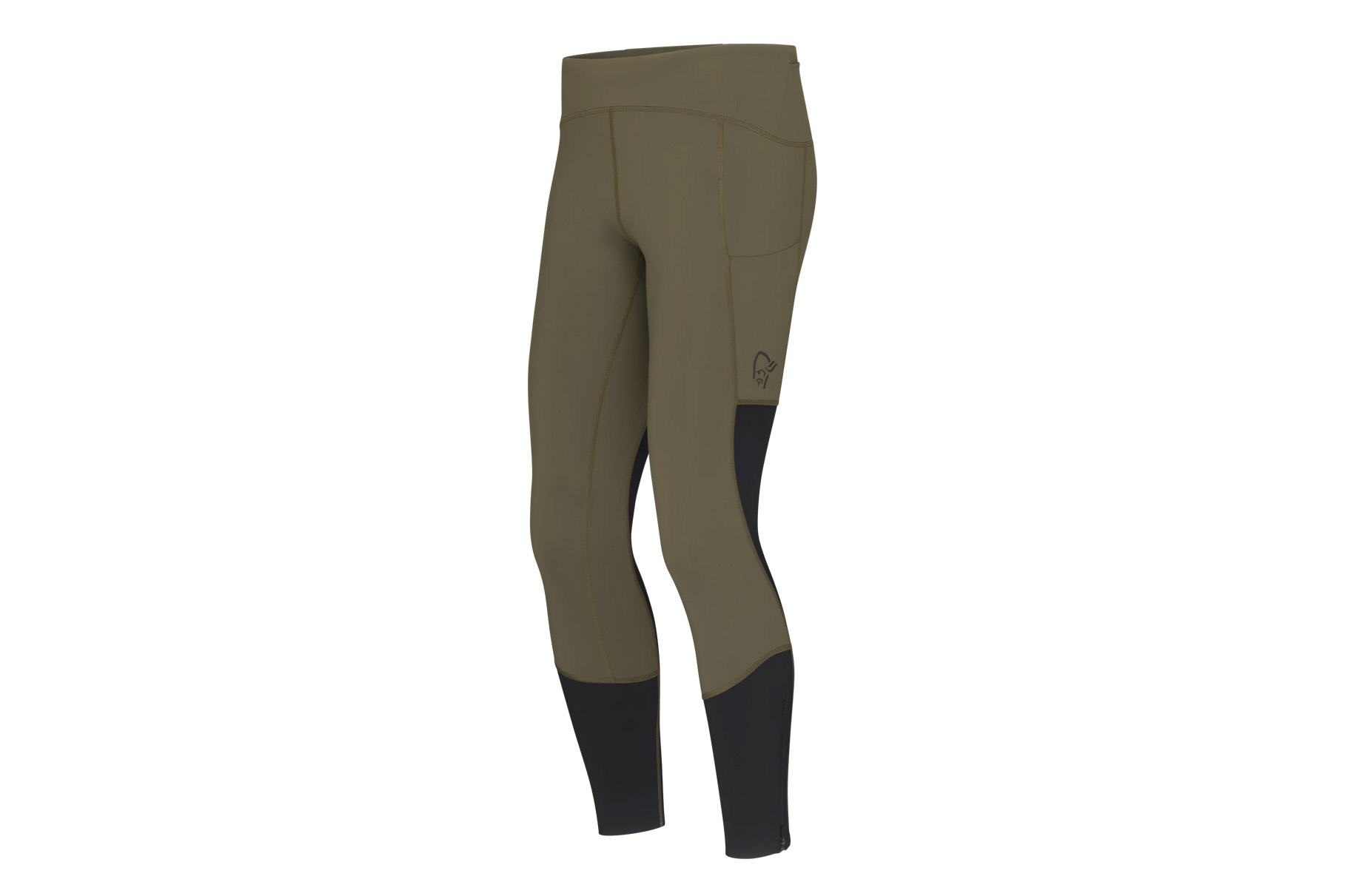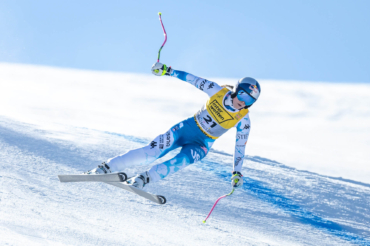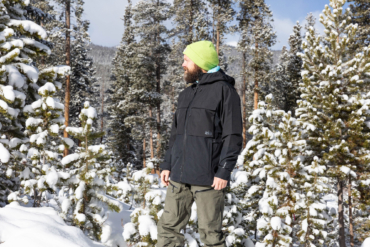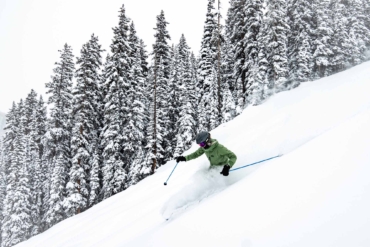There aren’t many outdoor challenges more daunting than a cold morning mountain run in March. Transitioning from a warm cup of coffee and an oversized sweatshirt to hustling in subzero temperatures is so unpleasant. Your cool-weather running kit is the only thing that can blunt that icy bite. The warmer side of the Norrøna Senja line, on paper, looked like it might.
The Senja line is purpose-built for trail running. I ran and I ran in this kit. Uphill and downhill, road and trail. In the cold dark and the blazing sun. I sprinted and I power-walked in deep snow, packed trails, and the fresh dirt of spring in Colorado’s central mountains.
I’ve been testing three pieces of the Norrøna Senja line over the past few months — The Warm1 Hood, GORE-TEX Active Jacket, and Equaliser Stretch Tight.
Ironically, given that the kit is purpose-built for running, my mind went to the other possibilities every time I put it on. Could these tights work as a base layer? Could this jacket join my climbing kit? Is the Warm1 hoody the perfect weight for ski touring and spring hiking?
Norrøna has a dedicated collection for each of these activities. But versatility is also foundational to their designs. I set out to test each piece in every situation that I could.
In short: Norrøna nailed it on their first trail running collection. It’s clear they took their time to dial in a dedicated mountain running kit that functions as you’d expect from a company like Norrøna. The collection’s cool weather pieces, including the Warm1 Hood, GORE-TEX Active Jacket, and Equalizer Stretch Tights set a high bar for trail running performance. Their surprising versatility across all seasons and many activities helps justify their high price tag.
Norrøna Senja Collection: Review
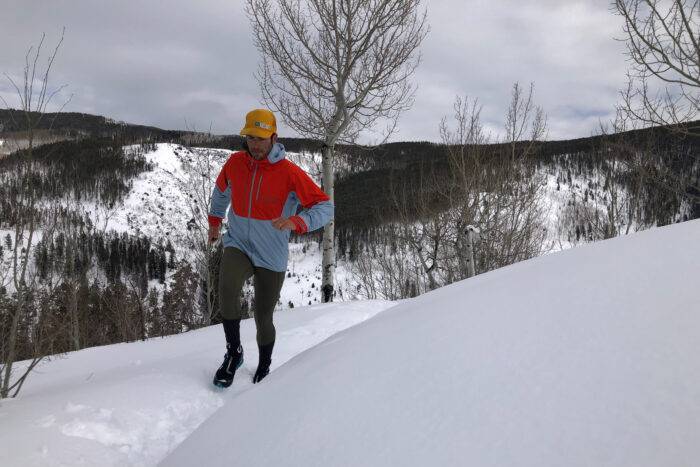
Each of Norrøna’s collections is named after the Norwegian region where that particular collection would excel. Lofoten? A freeskier’s paradise. Trollveggen? Home to big walls and mountaineering jewels. The Senja collection was designed to run in rugged terrain. The northern mountainous island known as Senja is a trail rønner’s paradise.
Norrøna doesn’t come out with an entirely new collection very often. This kit was designed from the ground up. Each piece in the line is minimalist. The features are elegant and blend seamlessly into the aesthetic.
- Weight 260 g (at size L):
- Hood: Stretch and close fitted
- Cuffs: Integrated with hand gaiters and thumb hole
- Seams: Flatlock chafe-free
- Gusseted armpit with stretch:
- 50% recycled synthetic fibers:
Pros
- Moisture-wicking and breathable
- Dries quickly
- Great mobility/stretch function
Cons
- Not very warm (contrary to name)
The Warm1
This top is my favorite piece of the collection. To be honest it’s a lot less warm than I was expecting given the name. On the bright side, it extends the usable temperature range upward significantly.
It’s less dead-of-winter, more shoulder season, and cool summer weight — somewhere between a lightweight grid fleece and a lightweight sun hoody, but closer to the latter.
It wasn’t enough on its own for midwinter morning runs before the sun came up. But it was excellent for the spring. With a baselayer, I could handle about 25 degrees F as long as I was moving fast.
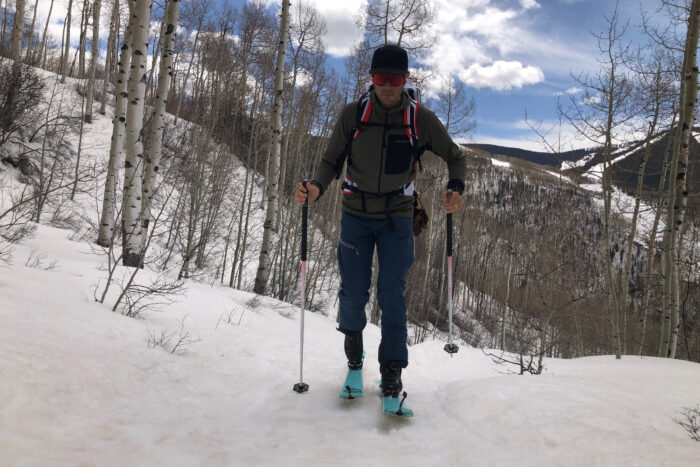
The Warm1 has elegant features primarily focused on breathability. The unique two-way ¾-inch zipper allows for big airflow without the piece losing its structure and bouncing around. You can keep the chin zipped up while opening the chest portion for significant venting.
The materials are also mapped to improve breathability. A thicker material on the front blunts the wind and a more breathable heavy mesh provides airflow under the arms and on the back.
The scuba-style hood fits nicely with and without a hat. It also works well under a climbing helmet for ski touring and climbing, but not over. I also wore it under a bike helmet for cold mornings and was pleased.

Versatility
Of all the Senja pieces, I was most eager to get this one on the skin track. And I may not go back to my sun hoodie for colder days. The Warm1 was an excellent weight for midwinter ski touring. It offers a nice balance between consistent warmth without overheating and sun protection.
The lightweight back panel worked terrifically with a backpack. It still gets sweaty, but there’s less material to get soaked and the whole thing dries quickly. I found that it moderated my temperature well on less severe days. I was plenty warm with my shell layered on top for the downhills in moderate conditions.
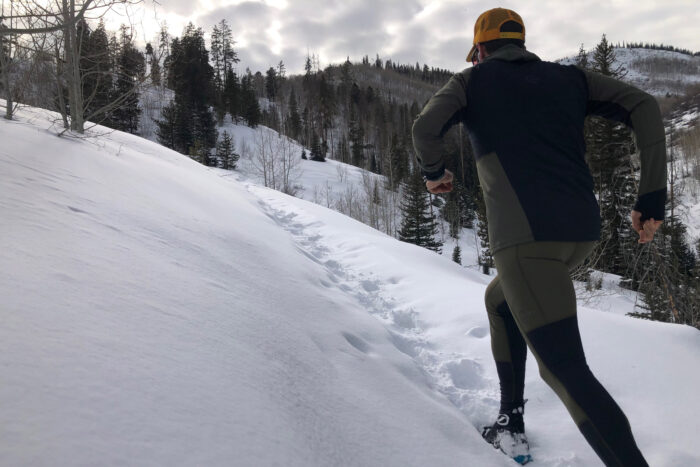
I can’t think of an active outdoor endeavor that wouldn’t suit the Warm1 Hood. It’s an excellent weight for hiking, fishing, rock climbing, mountain biking, commuting, etc.
It’s a daily driver, easily one of the most versatile pieces in the Senja collection. I put it through the wringer trying to find a flaw, and I’ve come up empty-handed.
Other than the name, Warm1, being a little bit misleading because it isn’t warm, this is a phenomenal piece.
And, if the Warm1 isn’t warm enough for your needs, it sounds like Norrøna is coming out with warmer additions to the Senja collections come fall 2023. That will include a fleece-weight hoody called the Alpha90 that should take the bite out of winter running.
- Weight: 280 g (at size L)
- Zippers: YKK water-resistant
- Fit: Slim
- Hem: Elastic
- Cuffs: Partly elasticated
- Chin protection: Soft brushed
- Storm hood: Helmet compatible
- Seams: Taped with thin GORE-TEX 13mm tape
Pros
- Hood fits over a helmet and can be rolled up and stored when not in use
- Packs into its own tail pocket to wear around waist
- Vents and breathes extremely well
- Waterproof, windproof
Cons
- Ultralight material is vulnerable to rips/tears
- High price point for a running shell ($550)
GORE-TEX Active Jacket
If it’s GORE-TEX, obviously it’ll block the wind, rain, and snow. I found that to be the case with the Norrøna Senja jacket. But I have not been impressed with the breathability of most hardshells I’ve run in. That’s partly a personal issue — I run particularly warm.
I was pleasantly surprised by the breathability of the GORE-TEX Active Jacket, however. With the generous built-in venting, I didn’t have issues keeping cool below about 45 degrees F. I ended up grabbing the jacket more often than I expected during cold morning runs, regardless of the weather. It took the sting out of the air.

Handy Features
My favorite feature of the entire jacket is an internal snap that holds the two sides together when you unzip the main zipper. It prevents the annoying flapping that usually accompanies shell venting.
The jacket has relatively small underarm ventilation, lowered and reduced to stay out of the way of natural arm swing. It’s also got a massive upper back vent that dumps heat.
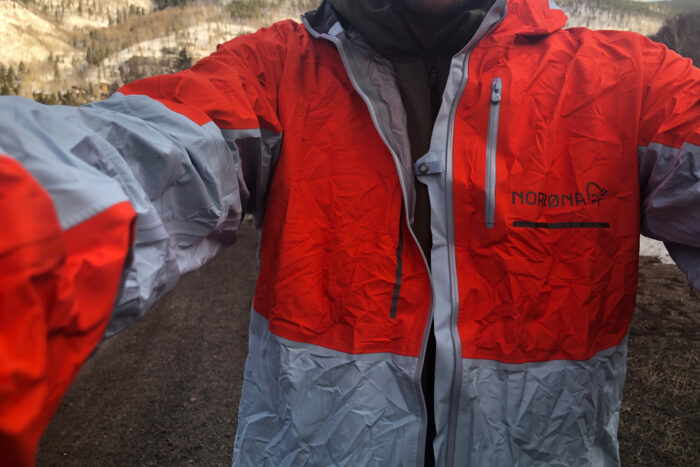
The hood is low profile and does the job well. It’s quite snug with a helmet on but still works. It also rolls up and secures with a snap so it doesn’t bounce if that annoys you.
I never felt the need to pack the hood away while running. But that’s a great feature for versatility on a gravel, road, or mountain bike, as it cuts the wind resistance.
Another great feature of the jacket is its ability to pack into its tail pocket, which reveals a hidden elasticized webbing belt. When packed up, you can wear the jacket around your waist so it stays out of the way for runs where you may or may not encounter wet weather or biting wind. It bounces around a little bit. But, I got used to it quickly once I settled into a rhythm.
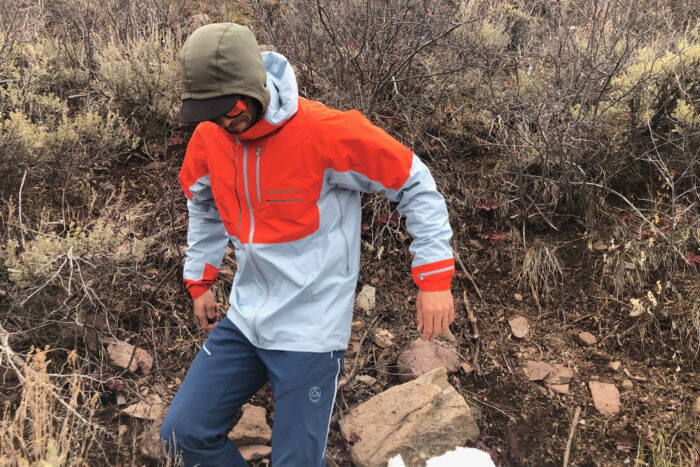
Fit and Versatility
The cut is slimmer than most hardshells, which feels perfect for trail running. Like Norrøna’s other outerwear, it’s also long. The cut keeps it from bunching at the waist and helps it ride well with a backpack or running vest.
Slim-cut jackets typically work much better than baggy styles for wearing a harness. I took the jacket ice climbing and the fit with a harness was superb. Logically, then, it could transition well to alpine climbing and summer mountaineering.
That said, the material is ultra-light. It likely can’t hold up to heavy-duty rock abrasion as well as a three-layer GORE-TEX Pro would. So, in those circumstances, it would work better as an emergency rain layer.
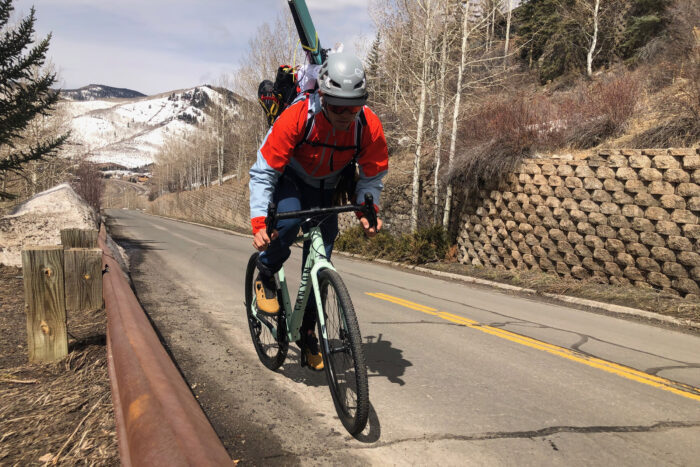
Who else could this jacket be for? Just about anyone who’s willing to shell out $550 for a top-of-the-line ultralight hardshell. This jacket transitions well to any activity, any season use. It’s an excellent hiking, backpacking, or cycling companion. And it packs up so small that there’s really no reason to leave it behind.
- Weight: 240 g (at size M)
- Waist: Adjustable with cord
- Back panel: Breathable stretch fabric
- Material: Comfort stretch
- Waist: Elastic
- Seams: Flatlock chafe-free
- Pockets: Two thigh, 2 gel, one zippered rear
Pros
- Balances protection and breathability
- Great mobility
- Moisture-wicking
Cons
- Ankle cuffs are very tight
Equaliser Stretch Running Tights
I wasn’t sure how much I’d be able to say about a pair of running tights. They’re a basic piece — if they fit, chances are they’ll do the job just fine. But like other Norrøna products, there’s an elegant simplicity with these and many more features than meets the eye at first glance.
The primary fabric is a stretchy, primarily recycled nylon blend that strikes a nice balance between protection and breathability. The panels in the back are a lighter recycled nylon fabric, adding to the breathability.
The ankle area is interesting. It utilizes flex1 softshell cuffs — Norrøna’s signature softshell fabric — at the leg openings for durability. I shred a lot of socks by skimming my ankles with my shoe tread. And so far the flex1 has kept the ankle area looking brand new.

In terms of trail running, these tights are excellent. They move and stretch well and there’s no restriction at any point of a stride or squat. I barely have hips and yet the Equalizers didn’t creep down, even on the downhill, which has plagued my other cool weather running lowers.
Norrøna’s Equalisers have great pockets, one zippered and several pouch-style, including thigh pockets, which fit a large iPhone. The rest of the pockets are big enough for snacks or a headlamp. The tights’ structure keeps everything secure and there’s little to no bouncing. My phone never jumped out of the thigh pocket, which I’ve experienced with similar designs.
The Equalizers fared well on cool weather gravel rides over a bib chamois, given their fairly robust structure and tight ankle cuffs. Being so snug all around, the crotch didn’t snag on the saddle like some others do. The thigh pockets securely held my phone and a multitool without any issues.
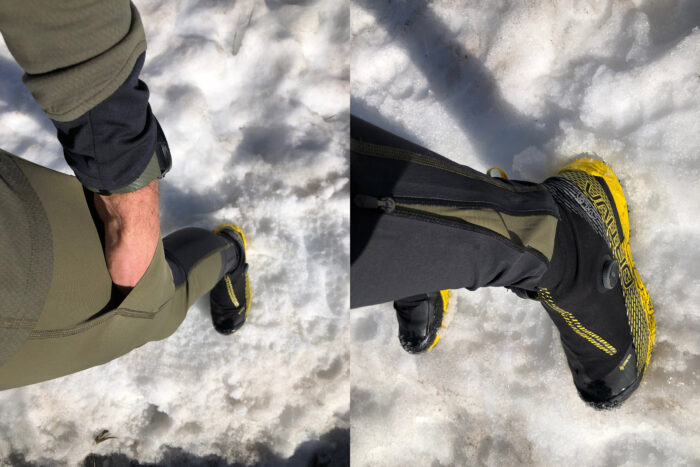
One Downside
The ankle cuffs are super tight. That’s great for running because they will never snag. Side zippers open them up about 5 inches to reveal a triangular gusset.
But even with the zippers fully open, it’s tough to get your feet in and out. That means getting the tights on and off takes some dedication. Forget to unzip them first? Think again because they’re not coming off.
The ankle zip prevents the Equaliser tights from transitioning to ski or tall boot activities because the cuff zipper would be inside your boot. The ankles are tight enough that it isn’t feasible to roll them up, either.
Norrøna Senja Collection: Conclusion
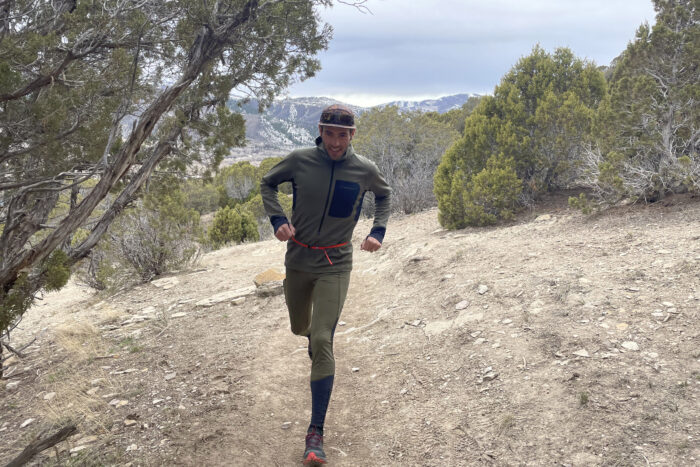
The Norrøna Senja collection sets a high bar for cool-weather trail running performance. They’re cleverly designed to move well, dump heat fast, and carry your essentials. Worn together, they keep you moving through nasty shoulder season conditions and a wide range of temperatures.
The versatility of these pieces, especially the Warm1 hoodie and Active Jacket, is what surprised me the most. They integrate seamlessly into fast-and-light kits for all manner of mountain pursuits. While nothing here is cheap, they’re built to last and made from almost entirely recycled materials.
